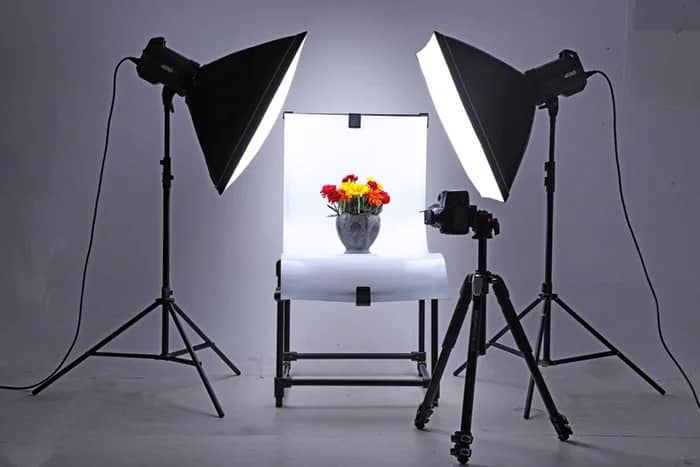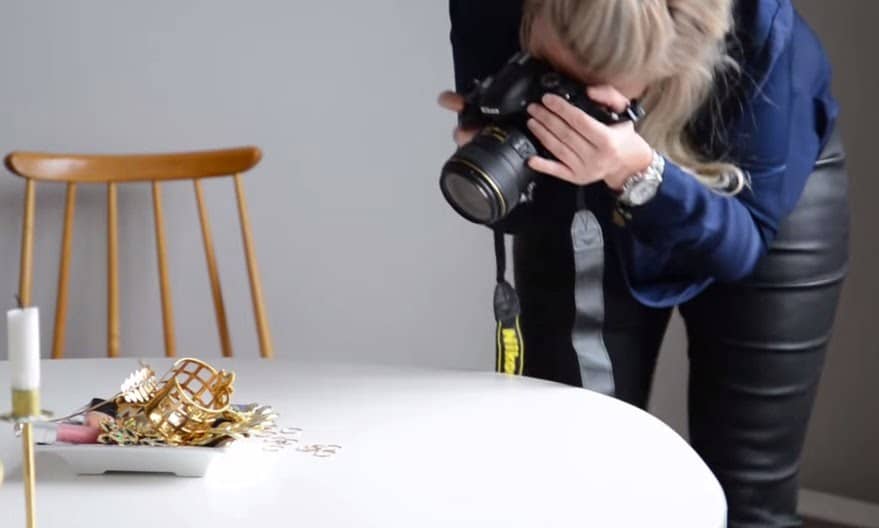Jewelry photography can be a tricky craft to master, but it doesn’t have to be. Are you looking to learn the art of jewelry photography, so you can showcase the beauty of your pieces? In this article, you’ll find out the best techniques to capture stunning images that will bring your jewelry to life. We’ll cover the basics of lighting and composition, as well as how to make the most of digital editing tools.
1. Lighting for Jewelry Photography
Lighting is key when it comes to capturing the true beauty of jewellery in photography. The right lighting can enhance the sparkle and shine of the jewellery, while the wrong lighting can make it look dull and lacklustre.
When setting up your photoshoot, natural light is ideal. Place your subject near a window or outside in the shade to avoid harsh shadows. If you’re shooting indoors, invest in a lightbox or softbox to create a diffused light that will evenly light up your subject.
It’s important to experiment with different lighting setups to find the best one for your jewellery. Try using a reflector to bounce light back onto the subject, or use a spotlight to create a dramatic effect.
Remember to also consider the colour temperature of your lighting. Most jewellery looks best under cool white light (around 5000K), but warmer tones can work well for certain pieces.
Overall, taking the time to perfect your lighting setup will ensure your jewellery photography showcases the true beauty of your pieces.

2. Composition and Framing
Composition and framing are essential elements of jewelry photography. The way a piece of jewelry is arranged in a photograph can significantly impact its visual appeal. A well-composed image can enhance the beauty and intricacies of the jewelry and make it more appealing to customers.
When framing a piece of jewelry, it is essential to consider its size and shape. Larger pieces may require a wider frame, while smaller pieces may benefit from a closer crop. The placement of the jewelry within the frame should also be considered. Jewelry should be placed in a way that showcases its unique features, such as gemstones or intricate details.
The use of props and backgrounds can also enhance the composition of a jewelry photograph. A neutral background can help the jewelry stand out, while props such as flowers or fabrics can add interest and texture to the image.
Overall, the composition and framing of a jewelry photograph should be carefully considered to showcase the beauty of the piece. By taking the time to compose a visually appealing image, jewelry photographers can capture the attention of potential customers and increase sales.
For more tips on jewelry photography, check out this helpful guide from Shopify.

3. Image Retouching Techniques
When taking photographs of jewelry, it is important to ensure that the image is of the highest quality. This can be done by using image retouching techniques. Image retouching is the process of editing digital images to improve the image’s overall appearance. This can include adjusting the colour, brightness, contrast, sharpness, and other details to make the image look more professional.
The following are some techniques that can be used to retouch jewelry images:
- Removing blemishes – This involves removing any blemishes such as scratches, dents, or marks on the jewelry. This can be done with the use of cloning, healing, or patching tools.
- Sharpening – This involves increasing the sharpness of the image to make it look more crisp and clear. This can be done with the use of sharpening tools.
- Colour correction – This involves adjusting the colours of the image to make them more vibrant and accurate. This can be done with the use of colour correction tools.
- Noise reduction – This involves reducing any noise or graininess in the image. This can be done with the use of noise reduction tools.
These techniques can help to ensure that jewelry images are of the highest quality and accurately represent the beauty of the jewelry.
4. Color Theory in Jewelry Photography
Color theory is an essential aspect of jewelry photography. Color combinations can enhance the overall appeal of the jewelry and make it more eye-catching. The color wheel is a useful tool to understand the relationship between colors. Complementary colors, which are opposite each other on the color wheel, can create a striking contrast and make the jewelry stand out. However, using too many complementary colors can also make the image appear chaotic. Analogous colors, which are adjacent to each other on the color wheel, can create a harmonious and cohesive image.
Another important consideration is the color temperature, which refers to the warmth or coolness of the colors. Warm colors, such as reds and yellows, can create a sense of energy and excitement, while cool colors, such as blues and greens, can create a calming and soothing effect.
It’s also important to consider the color of the background and props used in the image. Neutral colors, such as white, grey, and black, can create a clean and sophisticated look, while bold colors can add a pop of interest.
Overall, understanding color theory can help create visually appealing and effective jewelry images.

For more information on color theory, check out this color wheel guide by Canva.
5. Working with Metals and Reflections
Working with metals and reflections is an important aspect of jewelry photography. Metals can be challenging to photograph because they reflect light and can create unwanted glare or shadows. However, with the right techniques, you can capture the beauty of metal jewelry and create stunning images.
One technique is to use diffused lighting, which helps to soften the reflections and reduce glare. You can achieve this by placing a diffuser between the light source and the jewelry, or by using a softbox or umbrella to diffuse the light.
Another technique is to use a polarizing filter, which can help to reduce reflections and increase contrast. This filter works by blocking certain light waves, which can help to eliminate glare and improve the overall appearance of the jewelry.
When photographing metal jewelry, it’s important to pay attention to the angles and position of the jewelry. By adjusting the angle and position, you can create interesting reflections and highlight the texture and details of the metal.
Adding an image or chart that demonstrates the different techniques and angles would enhance this content. Image placeholder: (insert placeholder here). Image description: A chart showing different lighting techniques for photographing metal jewelry.
6. Different Angles and Perspectives
Different angles and perspectives can make a huge difference in showcasing the beauty of jewelry. Taking photos from different angles and perspectives can highlight unique details and features of the piece. For example, taking a photo of a ring from above can showcase the intricate details on the top of the ring, while taking a photo from the side can highlight the band and setting.
It’s important to experiment with different angles and perspectives to find the most flattering shot. Try taking photos at eye level, from above, and from below. You can also experiment with different backgrounds and lighting to create different moods and effects.
When taking photos of jewelry, it’s important to consider the purpose of the photo. Are you showcasing the piece for a catalog or website? Or are you taking photos for social media? Knowing the purpose of the photo can help you choose the best angles and perspectives to showcase the piece in the best way possible.
Adding an image or chart to this section would be helpful. Please insert an image of a piece of jewelry taken from different angles and perspectives. Image Description: A gold necklace with a pendant taken from above, below, and the side.In this article, you learned about the art of jewelry photography and how to showcase the beauty of your pieces. You discovered the best techniques for lighting and composition, as well as how to use digital editing tools to enhance your images. By understanding color theory, working with metals and reflections, and experimenting with different angles and perspectives, you can create stunning jewelry photographs that capture the attention of potential customers and increase sales. We hope you have learned
